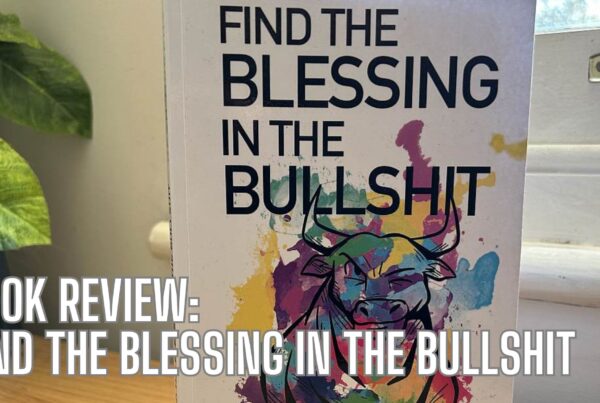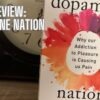Labelling Emotions: Understanding the Depths of Our Emotions
More Than Just Stress and Anger
When talking about our emotional state, it’s often heard that someone is “stressed” or “angry.” These terms, while commonly used, might not always capture the full spectrum of what’s being felt. Delving deeper into our emotional landscape can be an enlightening journey, revealing layers that might have been overlooked. Exploring the research on ‘labelling emotions’ can also help to understand why this technique can hold so much value.
The Importance of Labelling Emotions
Emotions play a pivotal role in our lives. They influence our decisions, shape our interactions, and even determine our overall well-being. But how often do we pause to truly understand what we’re feeling?
It’s been observed that many of us find it challenging to pinpoint our emotions. This isn’t surprising. From a young age, societal norms and expectations have subtly taught us to suppress strong emotions. Expressing feelings, especially in professional settings, is often seen as a sign of weakness or instability. As a result, many of us have never really cultivated a rich emotional vocabulary.
Susan David, a renowned psychologist from Harvard Medical School, emphasizes the pitfalls of misdiagnosing our emotions. If we misinterpret our feelings or those of the people around us, our reactions might be misguided. Recognizing the difference between anger and disappointment, for instance, can lead to vastly different responses.
The Science Behind Emotion Labelling
Research has consistently shown the benefits of accurately labelling emotions. When emotions are not acknowledged and addressed, it can lead to decreased well-being and increased physical stress symptoms. By naming our emotions, we can better understand the root cause of our feelings and devise strategies to address them.
A study by Hariri and colleagues in 2000 demonstrated the power of emotion labelling. Participants were shown emotional facial expressions and were asked to label them either emotionally (e.g., “angry”) or non-emotionally (e.g., assigning a gender). The results were intriguing. Those who labelled the emotions experienced increased activity in the pre-frontal cortex, an area associated with inhibitory control, and decreased activity in the amygdala, which is linked to emotional responses. This suggests that simply putting our emotions into words can help regulate them.
Subsequent studies have further highlighted the benefits of emotion labelling. It not only reduces the intensity of negative emotions but also alleviates physical symptoms associated with them.
Enhancing Our Emotional Vocabulary
So, how can we get better at understanding and labelling our emotions? Susan David offers some insights:
- Expand Your Emotional Vocabulary: When overwhelmed by a strong emotion, challenge yourself to describe it in three different ways. This exercise can uncover underlying feelings that might have been missed initially.
- Assess the Intensity: Every emotion has varying degrees. For instance, feeling “angry” might range from mild annoyance to intense rage. By gauging the intensity, we can better understand and communicate our feelings.
- Express Through Writing: Writing about our emotions can offer clarity. Setting aside time to jot down our feelings, especially during challenging times, can be therapeutic. It allows for reflection and can provide a fresh perspective on the situation.
By honing our ability to label emotions accurately, we equip ourselves with a powerful tool. It enables us to respond constructively, fostering better understanding and communication with ourselves and others.
Remember, emotions are complex, multifaceted, and deeply personal. By embracing them and seeking to understand them, we open the door to richer, more meaningful interactions and a deeper understanding of our inner world.
Release Hypnosis Melbourne Hypnotherapy
Since 2016, Lawrence Akers has been working under the name Release Hypnosis offering Hypnotherapy and ACT based work to the people of Melbourne or an online service. Based on St Kilda Rd, Release Hypnosis is an easy and convenient location to get to and accessible by the ANZAC station train and tram stop. Release Hypnosis can help with a wide range of presenting issues, and I offer a free 30 minute no obligation discovery call for those who are unsure if hypnotherapy is the right way forward for them.
Book Your FREE 30 Minute Consultation With Release Hypnosis NOW!
You may also like to read:
Discovering Purpose and Values: A Path to Mental Well-being
Can’t Visualise in Hypnosis? Here’s What You Can Do Instead.
Dealing with Financial Stress and Crisis: Finding Peace Amid Turbulence
What Is The Success Rate of Hypnosis?
Release Hypnosis Melbourne Hypnotherapy is accessible for people in: Abbotsford, Armadale, Albert Park, Balwyn, Bentleigh, Black Rock, Box Hill, Brighton, Brunswick, Bulleen, Bundoora, Camberwell, Canterbury, Carnegie, Caulfield, Chadstone, Cheltenham, Clayton, Coburg, Collingwood, Deer Park, Doncaster, Elsternwick, Eltham, Elwood, Epping, Essendon, Fairfield, Fitzroy, Footscray, Glen Iris, Glen Waverley, Glenhuntly, Greensborough, Hampton, Hawthorn, Heidelberg, Highet, Ivanhoe, Kew, Kooyong, Lalor, Laverton, Lower, Plenty, Macleod, Malvern, Middle Park, Moonee Ponds, Melbourne, Moorabbin, Mount Waverley, Murrumbeena, Northcote, Oakleigh, Ormond, Parkville, Pascoe Vale, Port Melbourne, Prahran, Preston, Richmond, Rosana, Sandringham, South Yarra, South Melbourne, Spotswood, St Albans, St Kilda, Surrey Hills, Templestowe, Thornbury, Toorak, Tullamarine, Williamstown, Yarraville, North Melbourne, Windsor, East Melbourne, Melbourne, Melbourne CBD, Melbourne 3004








